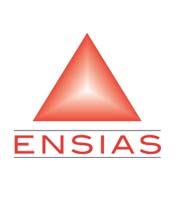- Accueil
-
L'Ecole
-
FORMATIONS
-
FORMATION INGENIEUR
-
Nouvelles filières offertes
- Ingénierie Intélligence Artificielle (2IA)
- Smart Supply Chain & Logistics (2SCL)
- Business Intelligence & Analytics (BI&A)
- Génie de la Data (GD)
- Génie Logiciel (GL)
- Ingénierie Digitale pour la Finance (IDF)
- Smart System Engineering (SSE)
- Data and Software Sciences (D2S)
- Cybersécurité, Cloud et Informatique Mobile (CSCC)
- REGLEMENT DES ETUDES DE L’ENSIAS CYCLE INGENIEUR
-
Nouvelles filières offertes
-
FORMATION INGENIEUR
- FORMATION CONTINUE
-
Recherche
- INTERNATIONAL
- ENTREPRISES
- VIE ESTUDIANTINE
- BIBLIOTHEQUE
LES DERNIÈRES INFORMATIONS
Deep hybrid architectures for diabetic retinopathy classification
| Titre | Deep hybrid architectures for diabetic retinopathy classification |
| Publication Type | Journal Article |
| Year of Publication | 2022 |
| Authors | Lahmar, C, Idri, A |
| Journal | Computer Methods in Biomechanics and Biomedical Engineering: Imaging and Visualization |
| Mots-clés | Classification (of information), Computer aided diagnosis, Deep learning, Diabetic retinopathy, Empirical evaluations, End to end, Extraction, Eye protection, Feature extraction, Features extraction, Hybrid architectures, Image classification, Learning algorithms, Learning architectures, Learning techniques, Medical image, Medical imaging, Performance, Support vector machines, Vision impairments |
| Abstract | Diabetic retinopathy (DR) is the most severe ocular complication of diabetes. It leads to serious eye complications such as vision impairment and blindness. A computer-aided diagnosis may help in the early detection of this disease, which increases the chances of treating it efficiently. This paper carried out an empirical evaluation of the performances of 28 deep hybrid architectures for an automatic binary classification of the referable diabetic retinopathy, and compared them to seven end-to-end deep learning (DL) architectures. For the hybrid architectures, we combined seven DL techniques for feature extraction (DenseNet201, VGG16, VGG19, MobileNet_V2, Inception_V3, Inception_ResNet_V2 and ResNet50) and four classifiers (SVM, MLP, DT and KNN). For the end-to-end DL architectures, we used the same techniques used for the feature extraction in the hybrid architectures. The architectures were compared in terms of accuracy, sensitivity, precision and F1-score using the Scott Knott test and the Borda count voting method. All the empirical evaluations were over three datasets: APTOS, Kaggle DR and Messidor-2, using a k-fold cross validation method. The results showed the potential of combining deep learning techniques for feature extraction and classical machine learning techniques to classify referable diabetic retinopathy. The hybrid architecture using the SVM classifier and MobileNet_V2 for feature extraction was the top performing architecture and it was classified with the best performing end-to-end architectures in the best clusters of APTOS, Kaggle DR and Messidor-2 datasets with an accuracy equal to 88.80%, 84.01% and 84.05% respectively. Note that the two end-to-end architectures DenseNet201 and MobileNet_V2 outperformed all the hybrid architectures over the three datasets. However, we recommend the use of the hybrid architecture designed with SVM and MobileNet_V2 since it is promising and less time consuming, and requires less parameter tuning compared to the end-to-end techniques. © 2022 Informa UK Limited, trading as Taylor & Francis Group. |
| URL | https://www.scopus.com/inward/record.uri?eid=2-s2.0-85129262042&doi=10.1080%2f21681163.2022.2060864&partnerID=40&md5=35c1d7e5976fbdb00e23b4aa456eadc9 |
| DOI | 10.1080/21681163.2022.2060864 |
Revues:
LIENS UTILES
Localisation
Contactez-nous
ENSIAS
 Avenue Mohammed Ben Abdallah Regragui, Madinat Al Irfane, BP 713, Agdal Rabat, Maroc
Avenue Mohammed Ben Abdallah Regragui, Madinat Al Irfane, BP 713, Agdal Rabat, Maroc
![]() Télécopie : (+212) 5 37 68 60 78
Télécopie : (+212) 5 37 68 60 78
![]() Secrétariat de direction : 06 61 48 10 97
Secrétariat de direction : 06 61 48 10 97
Secrétariat général : 06 61 34 09 27
Service des affaires financières : 06 61 44 76 79
Service des affaires estudiantines : 06 62 77 10 17 / n.mhirich@um5s.net.ma
CEDOC ST2I : 06 66 39 75 16
Résidences : 06 61 82 89 77
- Compteur de visiteurs:634,781
Education - This is a contributing Drupal Theme
Design by WeebPal.
Design by WeebPal.



































